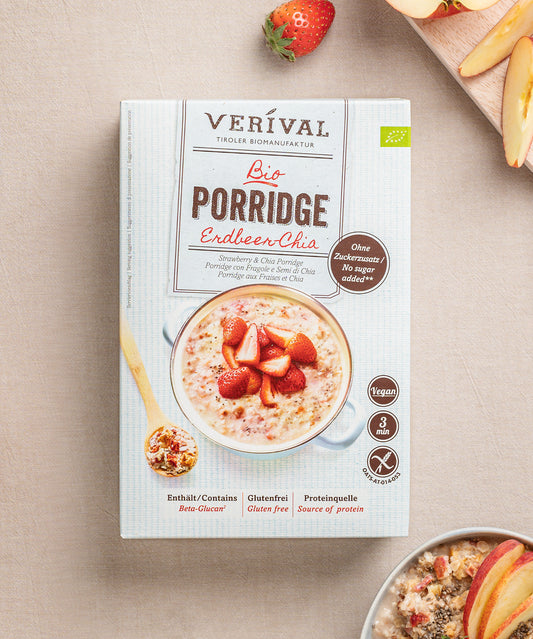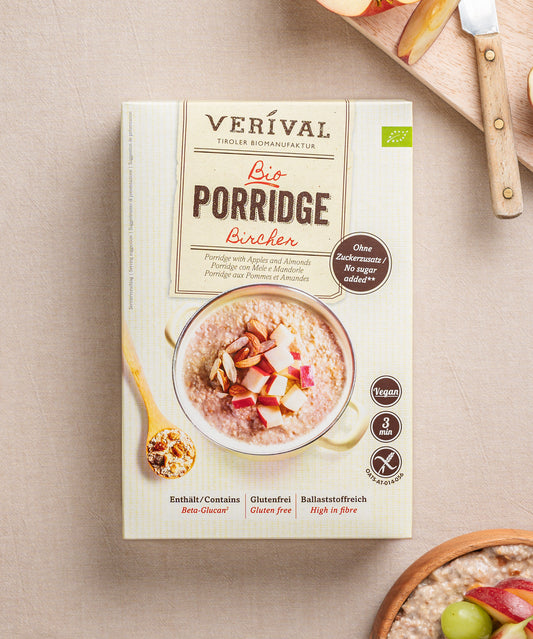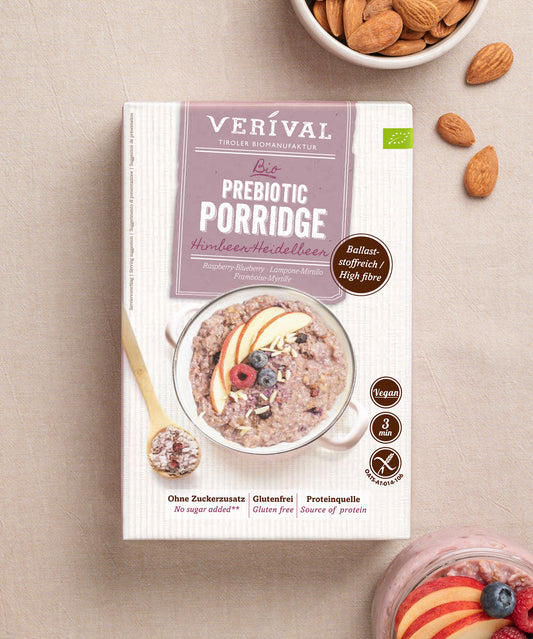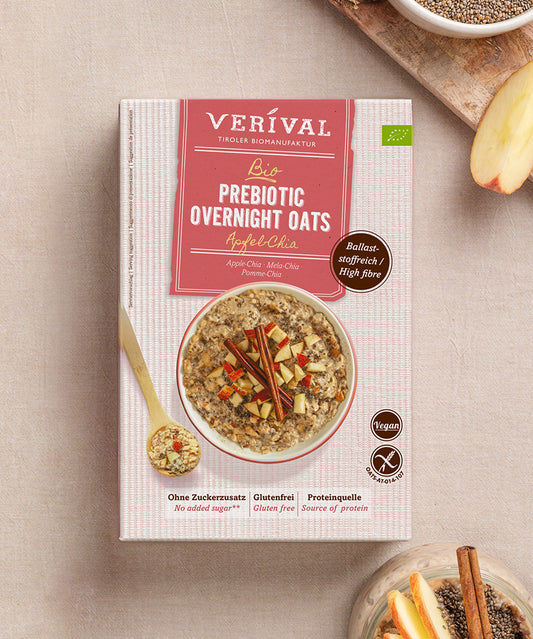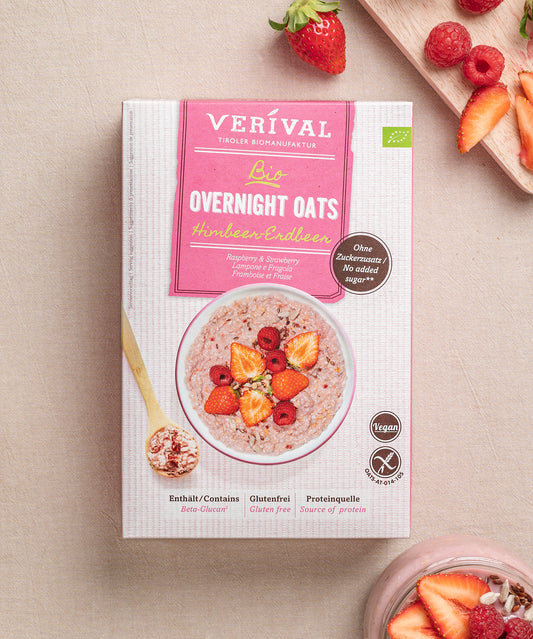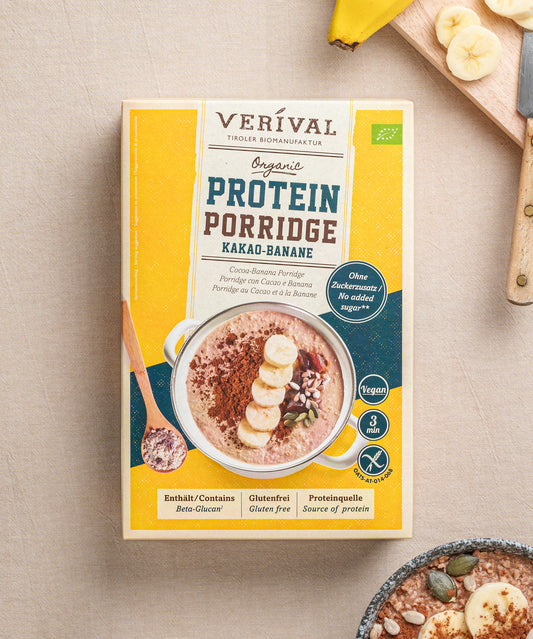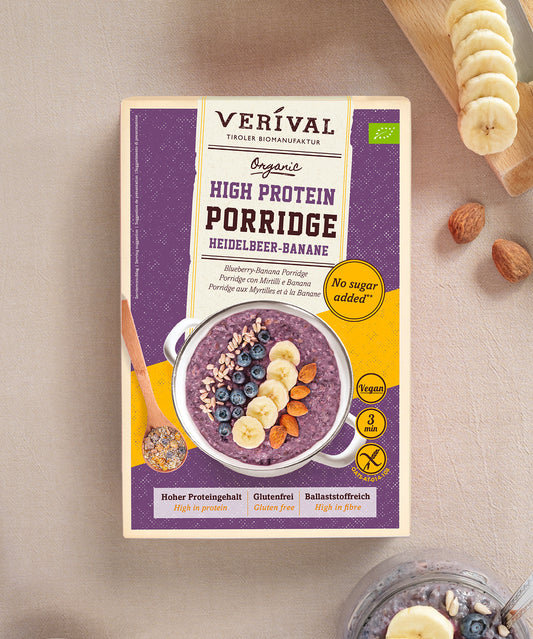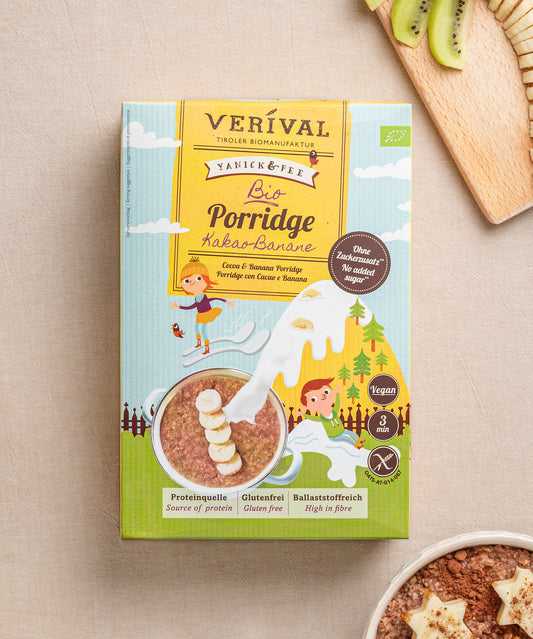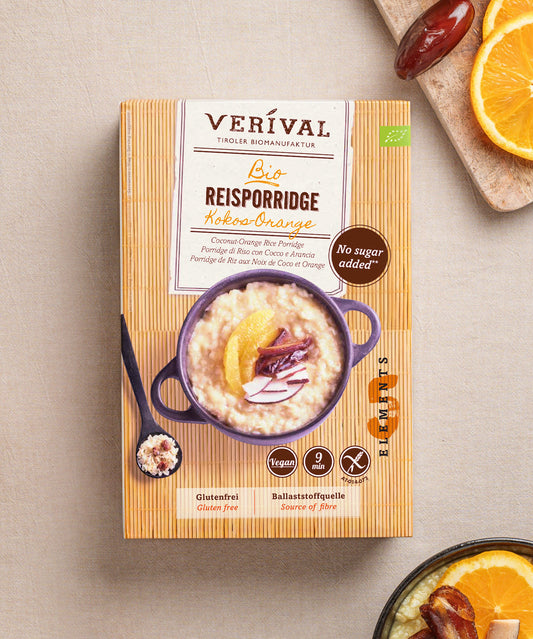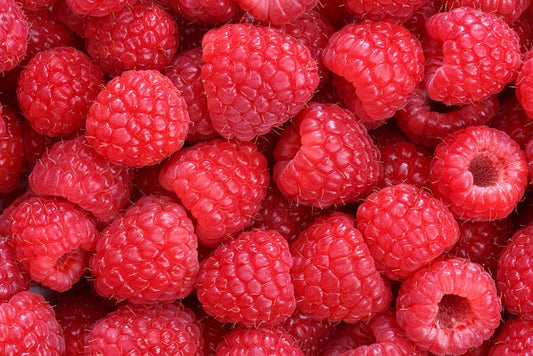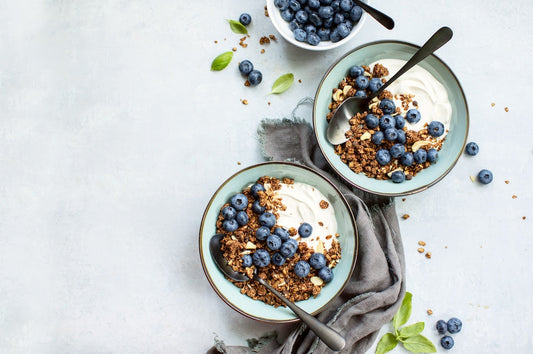Fat is often demonised and labelled as unhealthy. However, fat is an essential macronutrient and should therefore not be missing from any healthy diet.
In this article, we explain the difference between healthy and unhealthy fatty acids and how to recognise them, and we discuss why fat is important for our body. We will also give you practical tips to help you incorporate healthy fats into muesli or porridge into your diet.
Healthy breakfast from Verival – discover it here
There are basically two different types of fat in terms of their degree of saturation: saturated and unsaturated fatty acids.
Saturated fatty acids – why they are rather unhealthy
Saturated fatty acids have no double bonds in the fatty acid chain. This makes these fatty acids rather unhealthy. Even though saturated fatty acids are rather unhealthy, it makes no sense to try to completely eliminate them from your diet, as small amounts of saturated fatty acids can be found in all fatty foods.
Unsaturated fatty acids – the healthy fats
In contrast to saturated fats, unsaturated fatty acids have at least one double bond in the fatty acid chain. The number of double bonds affects the state of aggregation of the fats at room temperature.
Saturated fatty acids remain solid at room temperature. In contrast, polyunsaturated fatty acids become liquid at room temperature.
The ratio of saturated to unsaturated fatty acids in your diet is particularly important. This ratio should be around 1:2.
This means that your daily intake of saturated fats should be one-third and your intake of unsaturated fats two-thirds of your total fat intake per day.
Why is it important to get enough fat?
Fats fulfil various important functions in our body. These include, among other things:
- Protection for our organs: Fats are also important for the human body because they protect our organs, such as the kidneys, liver and brain. Fat acts as a kind of protective cushion for our organs and also helps to insulate us against the cold.
- Building blocks for our cells: Fat is an important building block for our cells and their components. Therefore, it should not be missing from any healthy diet.
- Absorption of vitamins: The body can only metabolise various vitamins (A, D, E and K) when they are consumed in combination with fat.
- Contain essential fatty acids: Some fatty acids cannot be produced by the body itself and must therefore be absorbed through food. These fatty acids are essential for life and must therefore be consumed in food. These include omega-6 and omega-3 fatty acids.
- Fattening fat: Fats have a higher calorie density than proteins and carbohydrates and therefore keep you full for longer.
This is your daily requirement of healthy fatty acids
All foods consist of the 3 macronutrients: carbohydrates, proteins and fats. Throughout the day, you should consume all three macronutrients through a varied diet . However, we often either eat too much unhealthy fat or avoid fatty acids altogether. Neither of these options is good for our body.
A fat deficiency is bad because our body needs fat to build our cell walls and to control our hormones. If you consume too little fat over a long period of time, it can also have negative consequences.
For example, it can weaken your immune system, cause hair loss, and even lead to growth retardation or infertility.
Of course, an overdose of fat is also harmful to our body. If we consume too much fat over a long period of time, the fat is stored around the abdominal cavity, liver, pancreas, heart and skeletal muscles, for example. However, the fat in these areas is not healthy and can therefore lead to chronic inflammation.
To ensure you get the optimal amount of fat, you should cover 30% of your energy needs with fats daily. If you consume 2000 kcal per day, you should therefore consume a maximum of 600 kcal in the form of fats. This roughly corresponds to 65 grams of fat per day.
How to recognise healthy fatty acids
There are many healthy and delicious foods that contain a variety of healthy fats. Foods with healthy fats are those that contain a high proportion of monounsaturated and polyunsaturated fatty acids and a low proportion of saturated fatty acids.
These foods are particularly high in healthy fats
You can easily find out which fatty acids and how much fat different foods contain by looking at the nutritional information table. This provides information about the total fat content, as well as the fat content of saturated or unsaturated fatty acids.
Nuts contain many healthy fats
Nuts in particular are known for their high proportion of healthy fatty acids. Various nuts, such as walnuts and macadamias, contain a particularly high amount of healthy fats. Walnuts, for example, are known for their high omega-3 fatty acid content. You can find out more about nuts and their nutritional values here.
Nuts are easy to incorporate into your breakfast. You can use them to top your porridge or yoghurt, for example. Adding healthy fats to your breakfast will help keep you full for longer.
Seeds and vegetable oils – full of healthy plant-based fats
Various other seeds and kernels, such as sunflower seeds, hemp seeds or pumpkin seeds, are also rich in healthy fatty acids. Furthermore, vegetable oils, especially cold-pressed oils such as olive oil, linseed oil and rapeseed oil, contain healthy fatty acids.
A simple rule of thumb for recognising how much saturated fat a food contains is that the more liquid a fat is, the higher the proportion of unsaturated fat it contains. Rapeseed oil, for example, consists of 90% unsaturated fatty acids and is therefore very liquid at room temperature.
In Verival Grain Free Muesli, you will find a variety of different nuts and seeds that provide you with optimal healthy fats.
Muesli with healthy fats – discover them here
Avocados also contain a good amount of healthy fat. So, as you can see, it's quite easy to meet your daily fat requirement with healthy foods.
Animal fat sources
If you eat fish, types such as salmon, tuna and mackerel are also a good source of healthy fats. Eggs, especially the yolks, also contain healthy fats.
3 tips for a healthy diet with fats
1. Watch out for hidden fats
Many ready meals, such as cakes, ready-made sauces and fast food, often contain large amounts of saturated fatty acids. That's why you should generally avoid unhealthy ready meals and take a close look at the nutrition information table.
Unhealthy fast food, such as French fries, fried snacks or desserts, often contain trans fats, which can increase the risk of cardiovascular disease.
As with everything, it's the quantity that makes the poison. So it's perfectly fine to indulge every now and then, but you should aim to include more healthy fats in your daily diet, such as those found in nuts, healthy oils or fish.
2. Use oil and fat sparingly when frying
1 gram of fat has 9 calories. By comparison, one gram of carbohydrates and protein has only 4 calories. This means that fats generally have a higher calorie density than proteins and carbohydrates.
That's why it's important to use fat sparingly. You should be especially careful with fat when frying, as it's easy to use too much.
3. Choose healthy sources of fat
As already mentioned, fat is an important macronutrient, just like carbohydrates and proteins, and should not be neglected. The only thing that is important is to choose healthy fats. You can find healthy, unsaturated fatty acids in nuts, vegetable oils, seeds and fish.
Conclusion
Even though it is often said that fat is unhealthy and leads to obesity, this is by no means true. Fat is an important macronutrient that should not be missing from a healthy diet.
It is only important to mainly choose healthy sources of fat and to only rarely consume real fat bombs, such as fried foods or chips. You can supply your body with healthy fatty acids as early as breakfast, giving you a fit and strong start to the day.


